Understanding Oculus 2 Controllers: A Comprehensive Overview
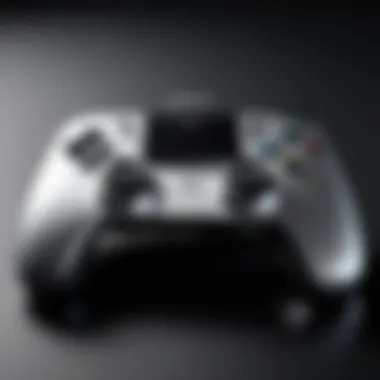
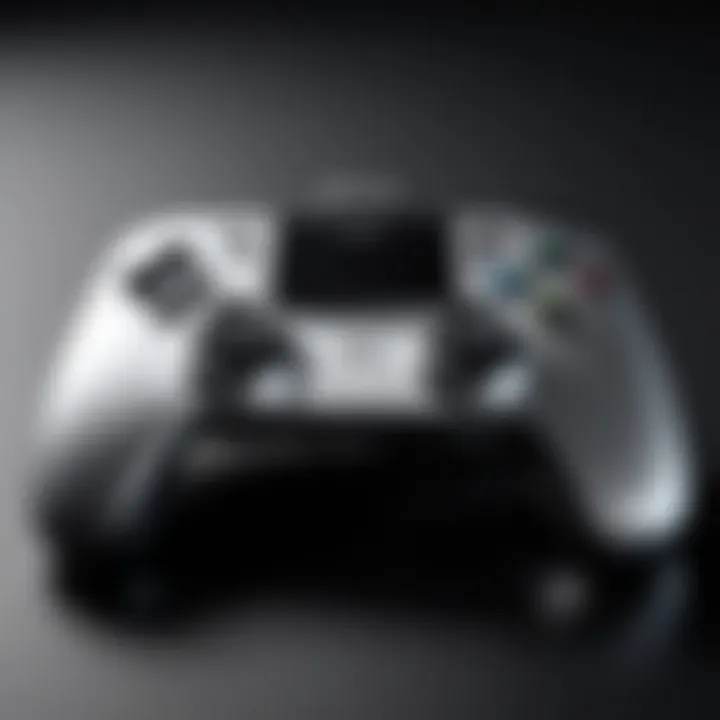
Intro
Virtual reality has become a transformative force in gaming and digital experiences. At the core of this revolution are the controllers that facilitate user interaction within virtual environments. The Oculus 2 controllers, created by Meta Platforms, stand out for their innovative design and advanced features, providing users with a more immersive experience. This section aims to explore the technology behind these controllers, shedding light on what makes them essential tools for VR enthusiasts.
Overview of the Technology
The Oculus 2 controllers boast a range of specifications that enhance their functionality. They are equipped with advanced tracking technology, allowing for high precision in movement recognition. This is crucial in a virtual setting where users expect accurate and responsive controls.
Key specifications
- Battery Life: Each controller uses AA batteries, providing a long-lasting experience with many hours of gameplay.
- Weight: They are lightweight, designed for extended use without causing fatigue.
- Tracking: Utilizing infrared and sensors, the controllers achieve 360-degree tracking, offering a seamless experience.
- Compatibility: Fully compatible with Oculus Quest 2, ensuring broad integration with various virtual reality games and applications.
Unique selling points
The Oculus 2 controllers distinguish themselves through several features:
- Hand Tracking: Beyond traditional button inputs, the controllers support hand tracking, allowing for more natural interactions within VR.
- Adaptive Triggers: These provide tactile feedback that responds to in-game actions, simulating a realistic feel during gameplay.
- Touch Design: Their design focuses on comfort, allowing for better grip and ease of use for extended sessions.
"The Oculus 2 controllers redefine what users expect from virtual interaction, bridging the gap between the real and digital realms."
Design and Build Quality
Upon first glance, the Oculus 2 controllers appear sleek and modern. The emphasis on ergonomics is evident in their form, which adapts to varying hand sizes.
Material used
Constructed from high-quality plastic, the controllers maintain a balance between sturdiness and lightness. The materials used are selected not only for durability but also for comfort, ensuring that users can engage with VR for long periods without discomfort.
Ergonomics and usability
The controllers feature an intuitive layout, with buttons and thumbsticks placed for easy access. This design minimizes the learning curve for new users, making it more accessible to a broader audience. The placement of sensors also contributes to the overall user experience, fostering a sense of connection to the virtual world.
In the dynamic domain of virtual reality, the Oculus 2 controllers serve as a key piece of technology that elevates engagement and interaction. Understanding their specifications and build quality is vital for any user looking to enhance their VR experience.
Foreword to Oculus Controllers
In the rapidly evolving landscape of virtual reality, the Oculus 2 controllers have become a significant element in how users interact with immersive environments. Their design and function are pivotal in enhancing user experience, making understanding these controllers essential for both new and experienced VR enthusiasts.
The importance of the Oculus 2 controllers lies not only in their technical specifications but also in their targeted utility that caters to diverse applications within VR. They play a crucial role in delivering feedback and facilitating movement within virtual spaces, thus allowing users to engage more fully with content. This interactivity can transform how users participate in gaming, education, and other VR-related activities.
Specific Elements
Several specific elements stand out in the discussion surrounding these controllers. Their ergonomic design allows for extended use without discomfort, catering to gamers and professionals who spend considerable time in VR. Moreover, the inclusion of advanced tracking technology enables accurate motion capture, which is vital for seamless interaction.
Benefits
The benefits presented by the Oculus 2 controllers are compelling. Enhanced tracking and intuitive controls improve gameplay dynamics and overall user satisfaction. Additionally, the ease of setup facilitates a smooth transition into the virtual environment, which is particularly beneficial for those who may not be tech-savvy. The controllers also feature comfortable grips and are lightweight, which reduces fatigue during longer sessions.
Considerations
When evaluating the Oculus 2 controllers, certain considerations must be taken into account. The compatibility with existing Oculus hardware is a critical aspect, as it determines how effectively the controllers integrate into a user's VR ecosystem. Furthermore, understanding the battery life and charging capabilities is essential for uninterrupted use, particularly in high-demand gaming scenarios.
"The advancement of VR technology hinges significantly on its accessibility and user interaction."
For more on VR technology, visit Wikipedia or explore discussions on Reddit.
Design Features
The design features of the Oculus 2 controllers play a crucial role in enhancing the overall virtual reality experience. Well thought-out design can improve not just usability but also user engagement. The importance of aspects like ergonomics, materials used, and weight balance cannot be underestimated. Each of these elements contributes to a user's comfort during long gaming sessions and impacts how effectively they can interact within virtual environments.
Ergonomics and Aesthetics
Ergonomics is a key factor in the usability of the Oculus 2 controllers. A controller that fits comfortably in the hand allows users to enjoy longer play without discomfort. The curved design of the controllers conforms well to a variety of hand sizes, promoting better grip and control. This is particularly noticeable during intense gaming scenarios, where precise movements matter. Aesthetically, the controllers exhibit a modern design that aligns with the expectations of tech-savvy users. The minimalistic look provides a sleek, attractive appearance that fits well with the overall vision of the Oculus platform.
Material and Build Quality
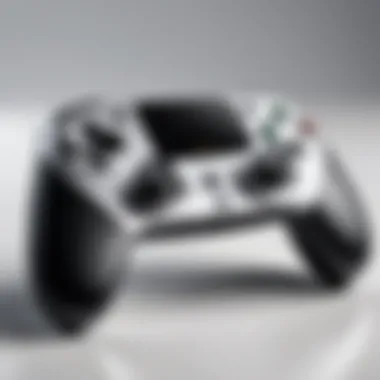
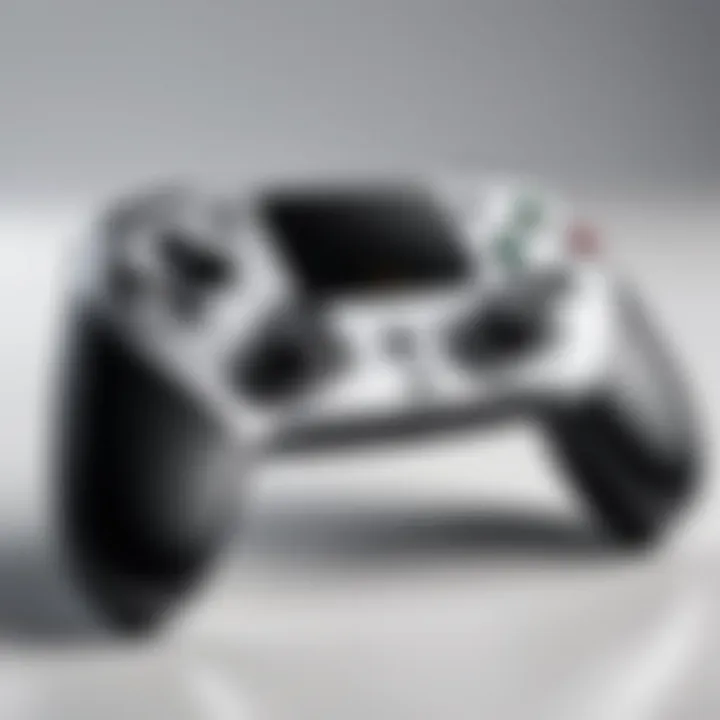
The materials used in the construction of the Oculus 2 controllers are thoughtfully selected to provide durability and reliability. These controllers are made from high-quality plastics that resist wear and tear, vital for devices expected to be used frequently. Notably, the buttons and thumbsticks are designed to withstand extensive usage, ensuring a consistent and reliable performance over time. The attention to build quality in these controllers can reduce the likelihood of breaking under stress, which is important for long-term investment.
Weight and Balance
Weight and balance are often overlooked but are integral to user satisfaction with VR controllers. The Oculus 2 controllers are designed to ensure that they have an optimal weight distribution. This means that they feel balanced in the hand, allowing for easy manipulation without fatigue. The weight also affects the feeling of immersion during gameplay. Heavier controllers could create fatigue, while overly light ones might feel insubstantial. The Oculus 2 strikes a careful balance that facilitates both comfort and control, enhancing the user's overall experience in virtual reality.
"A well-designed controller can elevate the entire VR experience, transforming interactions from ordinary to extraordinary."
In summary, the design features of the Oculus 2 controllers, encompassing ergonomics, material quality, and weight distribution, significantly contribute to their functionality and user experience. These factors must be considered for any user looking to maximize their virtual reality interactions.
Functionality Overview
The functionality of the Oculus 2 controllers significantly impacts the overall virtual reality experience. The controllers are essential for user interaction within the VR environment. Understanding their functionality can help users maximize their experiences and navigate various applications effectively. This section highlights specific elements related to button layout, tracking methodologies, and their impacts on usability.
Button Layout and Accessibility
The button layout of the Oculus 2 controllers plays a crucial role in user accessibility and comfort. The design includes multiple buttons positioned to allow easy access without stretching fingers awkwardly. Users can quickly reach the trigger, grip buttons, and thumbstick for smooth gameplay and navigation.
Ergonomically placed buttons reduce strain during extended usage, which is vital for comfort. The layout enhances user intuition, allowing players to focus on the game without distraction from controls. Having an easily accessible button layout is essential when engaging in fast-paced virtual experiences, where every second counts.
Tracking Methodology
The tracking methodology utilized by the Oculus 2 controllers is central to ensuring an immersive experience. By accurately capturing user movements, the controllers create a sense of presence in virtual spaces. Two primary tracking techniques will be discussed: Inside-Out Tracking and Motion Tracking.
Inside-Out Tracking
Inside-Out Tracking is a hallmark of the Oculus 2's capabilities. This system uses built-in sensors to track not only the controllers but also the user's movements within the space. One key characteristic of this tracking approach is its ability to eliminate the need for external sensors, simplifying the setup process.
This method proves beneficial for users who may not have the space for external equipment. The unique feature of Inside-Out Tracking lies in its real-time adjustment to the user's movements, providing a smooth experience. However, it may struggle in scenarios with complex lighting or reflective surfaces, which can disrupt tracking accuracy.
Motion Tracking
Motion Tracking further enhances the functionality of the Oculus 2 controllers. It senses the position and orientation of the controllers in real-time, enabling fluid interactions. A key characteristic of Motion Tracking is its sensitivity, which captures even the slightest hand movements, translating them into the virtual world.
This precision makes the controllers effective for a variety of applications—from gaming to educational experiences. Although Motion Tracking is generally reliable, it requires adequate space and a clear line of sight to function optimally. Blockages in the field of view can hinder performance, resulting in a less responsive interaction.
Setup and Configuration
The setup and configuration process for the Oculus 2 controllers is essential for an optimal virtual reality experience. A seamless setup not only enhances user engagement but also reduces technical barriers that may deter users from fully enjoying VR content. Understanding the specific elements involved in this process can ensure that users have a satisfactory introduction to their new device.
Several benefits come with an efficient setup. Firstly, a quick pairing process enables users to dive into their gaming or application experiences without delays. Additionally, proper software configuration allows the controllers to function harmoniously with the Oculus Quest 2 system. This is vital, especially given the complexity of some VR environments. This section will provide a thorough examination of the initial pairing process as well as the software prerequisites that support the functionality of the controllers.
Initial Pairing Process
The initial pairing process for the Oculus 2 controllers is designed to be user-friendly. However, understanding its intricacies can significantly enhance the overall experience. To begin, the user must ensure that both controllers have fresh batteries installed. Once batteries are in place, turning on the Oculus Quest 2 headset triggers the pairing mode. Users should see a prompt indicating that they can pair their controllers.
Here are the steps for an effective pairing process:
- Prepare the headset by powering it on.
- Ensure the controllers are within the range of the headset.
- Press the Oculus button on the right controller and the menu button on the left controller simultaneously.
- Follow any on-screen instructions that appear.
It is quite common for the pairing to be successful on the first attempt, although sometimes a user may need to repeat the steps to ensure connectivity. If any issues arise during this process, consulting the manual or the Oculus support site can be invaluable.
"A streamlined pairing experience sets the stage for immersive virtual exploration."
Software Requirements
For the Oculus 2 controllers to operate effectively, certain software requirements must be met. The Oculus mobile app is fundamental, as it serves as the primary hub for managing VR experiences. This app must be installed on a compatible smartphone. Users should also note that the Oculus operating system should be updated to its latest version to benefit from enhancements and bug fixes.
Key software components include:
- Oculus App: It enables the management and configuration of settings.
- Firmware Updates: Keeping the controller firmware updated ensures optimal performance and access to new features.
Installing the latest software versions not only improves functionality but also enriches user experience through added features. Ignoring updates risks experiencing glitches or missing out on the latest enhancements available to users. Overall, understanding the intersection between setup and software requirements is critical for anyone looking to make the most out of their Oculus 2 controllers.
Performance Metrics
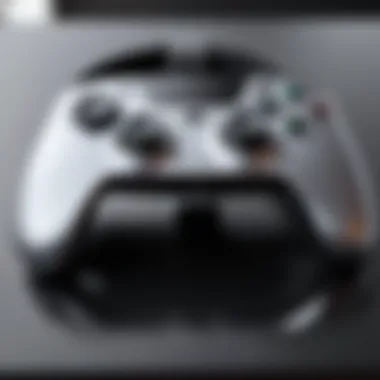
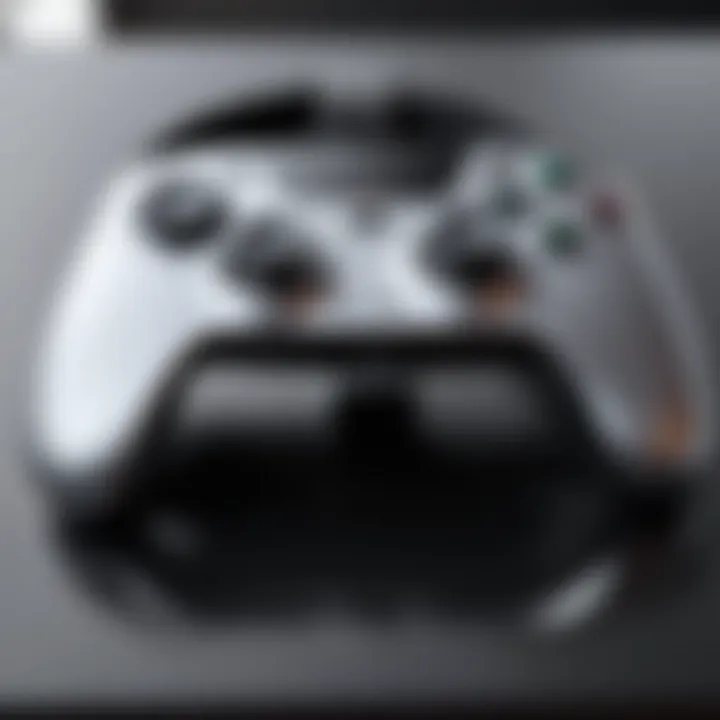
Performance metrics are crucial for evaluating the effectiveness of the Oculus 2 controllers in delivering an optimal virtual reality experience. They encompass various parameters that directly impact how users interact within virtual environments. In this context, two primary metrics emerge: latency and responsiveness, as well as battery life and usage patterns. Both aspects offer significant insights that can help users comprehend the limitations and strengths of their VR controllers.
Latency and Responsiveness
Latency refers to the delay between a user's action and the corresponding reaction in the virtual environment. It is a key factor that can affect immersion and user experience. Low latency is essential for a seamless experience. When the latency is minimal, motions in the virtual world feel natural and instantaneous, enhancing the overall sense of presence.
Factors influencing latency include:
- The quality of tracking technology
- Processing speed of the attached hardware
- Software optimization
Oculus 2 controllers utilize advanced tracking technology to minimize these delays. Motion tracking is engineered to be as responsive as possible, ensuring that hand gestures are translated into the VR space in real-time. This minimizes feelings of disconnection and fosters a more engaging experience.
In contrast, high latency can lead to discomfort, as it disrupts the fluidity of motion and may cause disorientation that detracts from enjoyment of the gaming or immersive experiences. Developers often focus on improving responsive mechanics since this creates a more engaging environment for users.
"The responsiveness of VR controllers is just as crucial as the visuals; any lag can break the immersive spell."
Battery Life and Usage Patterns
Battery life is another essential performance metric to consider. The Oculus 2 controllers are designed to provide significant usage time without frequent interruptions for recharging. Users typically expect long-lasting battery performance to support extended gaming sessions or immersive experiences.
Key considerations for battery life include:
- Type of batteries used (e.g., AA, rechargeable)
- Energy consumption of various features
- Patterns of usage by different types of games or applications
The batteries in Oculus 2 controllers are geared toward optimizing performance while ensuring longevity. However, the specific demand on battery life will vary depending on how the controllers are used. Features such as haptic feedback and tracking accuracy require energy, and more intense games may drain the battery faster than casual applications.
Understanding these metrics helps users manage their expectations regarding performance and enjoy their VR experiences fully. Responsible usage patterns, including periodic recharging and power-saving modes, can enhance battery longevity, an important consideration for intensive gamers or regular VR users.
User Experience Insights
User experience is a critical aspect when evaluating the Oculus 2 controllers. Effective controllers should enhance interaction within virtual environments, facilitating a seamless and enjoyable experience for users. The insights gathered from users can help developers fine-tune controllers, ensuring a better performance and improved satisfaction.
User Feedback and Reviews
Feedback from users is invaluable when it comes to understanding the efficacy of the Oculus 2 controllers. Many users appreciate the intuitive design and button layout, which allows for quick access to essential functions. Reviews often highlight the precise tracking capabilities and how it contributes to a more immersive experience. Many users have pointed out that the controllers feel natural in hand, enabling fluid motion. This kinesthetic feedback fosters an engaging atmosphere, allowing players to fully immerse themselves in the virtual realm.
On platforms like Reddit, discussions frequently emerge surrounding user experiences. Some posts detail experiences from both novice and seasoned users, providing a panoramic view of the controllers in action. Negatives sometimes mentioned include occasional tracking issues in low-light conditions or distance limitations. Feedback indicates that these concerns, while present, do not overshadow the overall positive user experience.
Considerations like comfort during prolonged use and battery performance also appear in user reflections. Many commend the lightweight design, which reduces strain over extended usage. Summing up, user feedback is noteworthy as it aids potential buyers in setting realistic expectations and navigating any shortcomings.
Common Issues and Troubleshooting
Despite the overall positive reception, common issues may arise with the Oculus 2 controllers. One frequent concern users mention is connectivity problems. Sometimes, the controllers may disconnect unexpectedly, resulting in frustration during gaming. If this happens, a simple reset process, including turning off the headset and removing and reinserting the batteries, is usually effective.
Another point of contention involves compatibility with various VR setups. Users have reported difficulties when integrating the controllers with specific software requirements. Ensuring all software is up-to-date can prevent these issues.
Here are some common troubleshooting tips:
- Make sure the controller batteries are fully charged.
- Ensure there are no obstructions in the tracking space.
- Re-pair the controllers if connectivity issues persist.
- Check online forums or community pages for any ongoing issues that may be widely recognized.
Investing time in tracking down common issues keeps the user experience enjoyable. Thus, embracing collective knowledge and sharing insights across platforms can lead to quicker resolutions and a smoother overall experience.
Comparative Analysis
In the realm of virtual reality, understanding the control mechanisms and how they evolve is essential for enhancing user experience. The comparative analysis of the Oculus 2 controllers plays a crucial role in this article. It allows for an examination of advancements in technology, improvements in design, and shifts in user preferences. This analysis not only highlights how the Oculus 2 controllers stand out from their predecessor but also sheds light on the competitive landscape of VR controllers.
By delving into the nuances of the Oculus 1 controllers and contrasting them with their successors, one can appreciate the strides made in functionality and user satisfaction. This section is imperative because it provides context and illustrates the evolutionary path VR controllers have taken. The insights gained from this analysis inform potential buyers and current users about the strengths and weaknesses of these devices in practical scenarios.
> "Comparative analysis sheds light on how experienced users interact and what they expect from their devices."
Comparison with Oculus Controllers
When comparing the Oculus 2 controllers with the original Oculus 1 controllers, several key differences emerge. The Oculus 1 controllers, while innovative at their time of release, presented limitations that users contended with. The new design of the Oculus 2 controllers enhances ergonomics significantly. It provides a more comfortable grip, essential for extended VR sessions.
The button layout also shows marked improvement. The Oculus 1 controllers had a simpler configuration that, while functional, lacked the complexity demanded by more immersive gaming experiences. In contrast, the Oculus 2 design integrates additional buttons, allowing for greater control and accessibility.
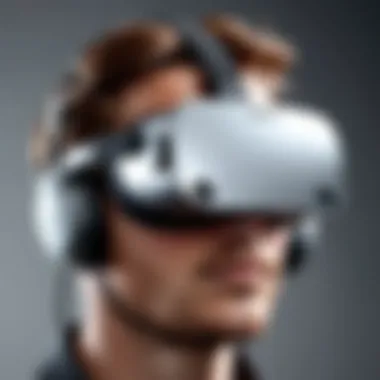
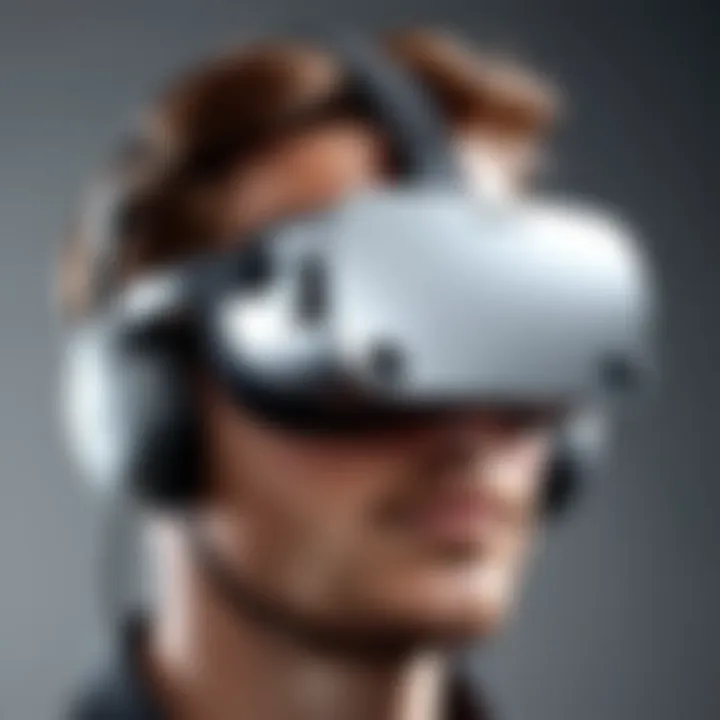
Performance is a crucial metric in this comparison. Oculus 2 controllers feature refined latency and tracking capabilities. This enhancement leads to a more responsive feel, which can make a substantial difference in fast-paced games where timing is critical. Overall, transitioning from Oculus 1 to Oculus 2 represents a considerable upgrade in both form and function.
Competing Controllers in the Market
The market for VR controllers extends beyond just Oculus products. Competing devices, such as the Valve Index Controllers and the HTC Vive Controllers, provide alternative experiences that warrant examination. Each product has unique features that cater to different user preferences.
For instance, the Valve Index Controllers are designed to acknowledge individual finger movements. This capability enhances interactivity in virtual environments, making the experience more immersive. While Oculus 2 offers a more direct user interface, Valve’s approach exemplifies how controllers can further bridge the gap between the real and virtual worlds.
Price factors also come into play. Oculus 2 controllers often provide a more budget-friendly option compared to high-end models from rival brands. This affordability opens up the VR experience to a broader audience, making the technology more accessible.
Technological Innovations
The realm of virtual reality is constantly evolving, and technological innovations are the backbone of this advancement. Understanding these innovations in the context of the Oculus 2 controllers unveils several critical aspects that enhance user experiences. These innovations not only expand the capabilities of VR but also play a pivotal role in how users interact with digital environments. This section delves into the integration of these controllers with the Oculus Quest ecosystem and highlights potential future trends in VR controller technology.
Integration with Oculus Quest Ecosystem
The integration of Oculus 2 controllers with the Oculus Quest ecosystem exemplifies a seamless user experience. With the design centered around compatibility, these controllers enhance the functionalities of the headset and create a cohesive VR environment. The controllers include advanced features such as haptic feedback, which enriches interactions and increases immersion.
Users can navigate, interact and manipulate virtual objects with ease thanks to the natural movement tracking. The Oculus Link feature also allows users to connect their controllers to a PC, enabling access to a broader library of VR content. This versatility not only increases the range of experiences available but also bridges the gap between standalone and PC-based VR gaming.
In addition, ongoing software updates from Facebook ensure that the integration continues to improve. This is vital, as user feedback drives enhancements in performance and stability. Users have reported benefits from updates that address tracking calibration and button responsiveness, further solidifying the importance of an integrated system.
Future Trends in VR Controllers
Looking ahead, several trends in VR controller technology are anticipated. One significant trend is the development of more advanced haptic feedback systems. As technology progresses, we may see controllers that provide nuanced tactile sensations, allowing users to feel textures or resistance more accurately.
Another trend is the potential for gesture recognition without the need for controllers. Companies are exploring hand tracking technology that could eliminate the need for handheld devices altogether, giving users a more natural interaction with virtual worlds.
The integration of artificial intelligence may also play a crucial role in enhancing interactions. AI could personalize user experiences based on behavior and preferences, allowing for a unique engagement with content. This level of customization not only enhances user satisfaction but may also attract more individuals to the VR space.
Moreover, sustainability is becoming increasingly important in technology development. As environmental considerations gain prominence, future VR controllers may use recyclable materials and energy-efficient components, aligning with global sustainability goals.
"Technological innovations in VR are not just about creating new devices; they redefine how we interact with digital realities and enhance our sensory experiences."
These trends signal a dynamic future for VR controllers, with possibilities that will shape the landscape of virtual reality. The role of Oculus 2 controllers in this evolution is crucial, as they set a benchmark for future developments in the industry.
End
The conclusion serves as a crucial part of this article, synthesizing the insights presented throughout the discussion about Oculus 2 controllers. It acts as the final word that encapsulates the functional and experiential advantages these controllers offer to users from various backgrounds.
Emphasizing the importance of design and functionality is vital in understanding the full potential of these devices. Oculus 2 controllers enhance interaction within virtual environments due to features like precise tracking, an ergonomic design, and intuitive buttons, which all together contribute to a smoother user experience.
In assessing user feedback and performance metrics, it is clear that the Oculus 2 controllers address many criticisms found in previous models. This evolved technology meets the demands of modern VR enthusiasts, who expect both comfort and efficiency in their devices. Some key benefits highlighted include:
- Enhanced Comfort: Ergonomic design allows for prolonged usage without discomfort.
- Improved Tracking: Advanced sensors provide accurate motion tracking, enriching gameplay.
- Intuitive Layout: Easy access to buttons facilitates quicker responses.
However, it is important to consider some common challenges users may face, such as connectivity issues or battery management. Acknowledging these factors ensures that users are prepared for a seamless integration of controllers into their VR setup.
By synthesizing these elements—design, performance, and user feedback—this article illustrates how Oculus 2 controllers are not just tools for gaming but pivotal components that redefine interaction in virtual reality. Their role not only enhances the user experience today but also lays a foundation for future innovations in consumer technology, signaling that VR is an evolving landscape ready for exploration.
The ongoing evolution of VR technology reflects a growing need for efficient user interfaces, making the advancements in Oculus 2 controllers a significant development in this realm.
In summary, the conclusion drawn reinforces the impact of Oculus 2 controllers on virtual reality experiences, allowing for deeper engagement and interaction while signaling a promise for future developments in VR technology. Users, whether novice or expert, can expect a high-quality experience that continues to improve as the technology advances.
Importance of Reliable Sources
- Enhancing Credibility: Citing credible sources such as academic papers, industry reports, and manufacturer specifications assures the reader of the accuracy and reliability of the information. It indicates that the article is not merely opinion-based but is grounded in research and empirical data.
- Facilitating Further Research: This section enables interested readers to delve deeper into specific topics. By providing links or citations, readers can explore original studies or other authoritative resources that offer more in-depth knowledge about VR technology and the specific aspects of the Oculus 2 Controllers.
- Contextual Understanding: Referencing materials can also provide context to the evolution of VR technology. By including works that trace the development of the Oculus line of products, readers can better appreciate the advancements made in the 2 Controllers compared to their predecessors.
Specific Elements in the References
The References section should include various types of materials such as:
- Technical Manuals: Documentation from Oculus that explain the controllers’ functionality and specifications.
- User Reviews and Forum Discussions: Engaging with platforms like Reddit can provide real-world insights and feedback from actual users of the controllers, showcasing common experiences and issues.
- Industry Analysis: Articles from tech websites that compare VR technologies give a broader perspective and highlight the competitive landscape of VR controllers, including comparisons with competitors like Valve Index and HTC Vive.
- Academic Research: Scholarly articles that explore the psychological effects of virtual reality on users can add a layer of academic rigor to the claims about user experience.
"References are not just a list of sources used; they are a bridge to further knowledge and understanding."
Considerations for Compiling References
When compiling the References section, it’s essential to ensure:
- Up-to-Date Information: VR is a rapidly evolving field, and new advancements may alter previous understandings. Always check the publication date of your sources.
- Diversity of Sources: Relying on diverse types of sources (technical, empirical, and anecdotal) can paint a balanced picture of the Oculus 2 Controllers.
- Attribution: Properly attributing information not only avoids plagiarism but also respects original authorship and promotes academic integrity.







